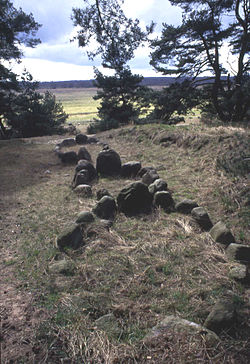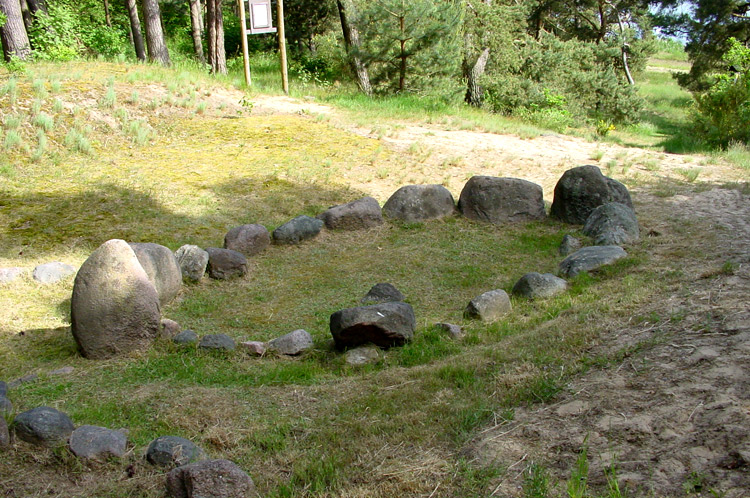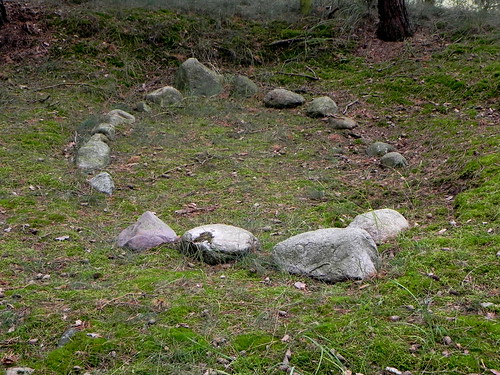Altes Lager (Menzlin)
Plant
On a sandy knoll near the banks of the Peene was an approximately 18 -acre settlement in the 9th century. During the excavations the remains of a wooden bridge were found and excavated 1965-1969, the associated cremations cemetery. In the tombs Scandinavian grave goods, as well as valuable imports, including those from Ireland and the Baltic states were found. The funeral in eight boat-shaped stone settings, twelve stone circles, 33 cremations and a Ustrine ( cremation ground ) corresponds to simultaneous Scandinavian customs. After the additions to judge is women's graves. The male graves are either uncharacteristic equipped or have not been discovered.
Dendrochronologically originate most Menzliner finds from the early and mid- 9th century. The settlement is one of the venues of the 9th and 10th centuries in the Baltic region, as they existed under other in Birka (Sweden), Kaupang (Norway ), Hedeby, Wollin and Truso. The location allowed the trade with Scandinavia and the Slavic hinterland. There were a large number of beads of amethyst, rock crystal, glass, carnelian and slate, so not found locally occurring materials.
Adam of Bremen reported in its written to 1075 the Hamburg Church Chronicle of a " land from the Elbe estuary by Wollin and Stettin ." For travel on this Via Regia, which must have touched Menzlin, you needed seven days in the 11th century.
Name
The old name of the place is unknown, leading to speculation raises. Thus, the identification with the legendary Vineta or Jomsborg is also under discussion. Whether Jomsborg however, is identical to Arkona, Ralswiek, Menzlin, Wollin or another yet unknown settlement, has not been clarified.
The term " Altes Lager " is the field name of the cemetery, and probably goes back to the time when the Great Elector in 1676 during the siege Anklam near Menzlins his camp had. The place of early medieval settlement bears the hall named " Peene mountain".







